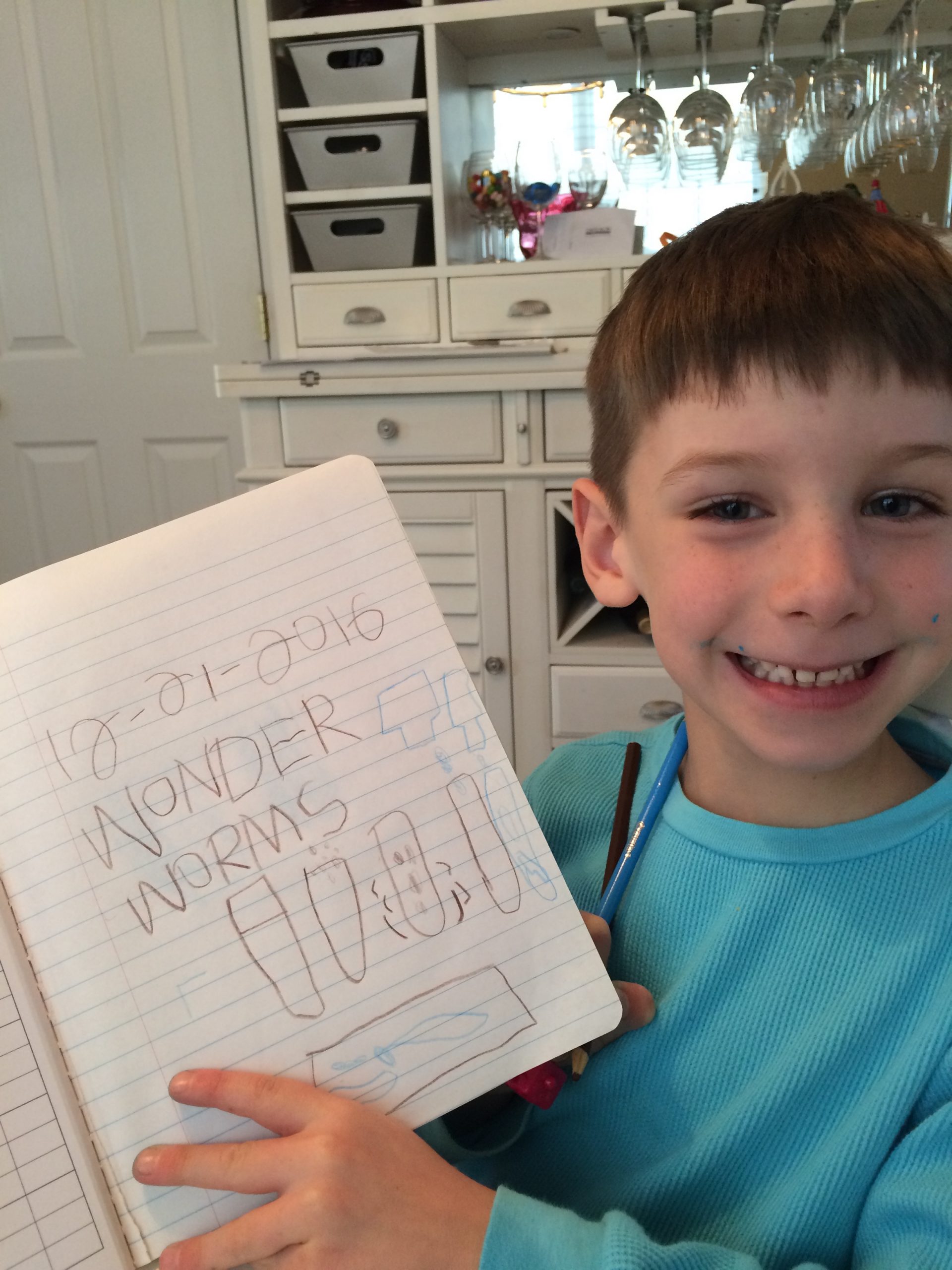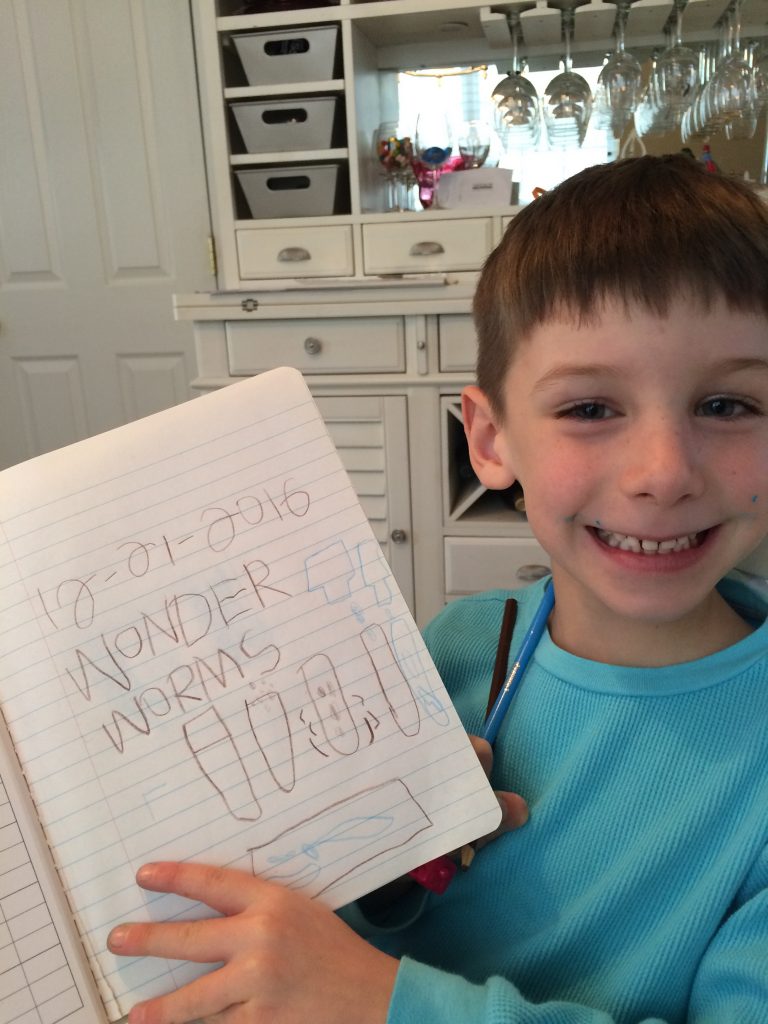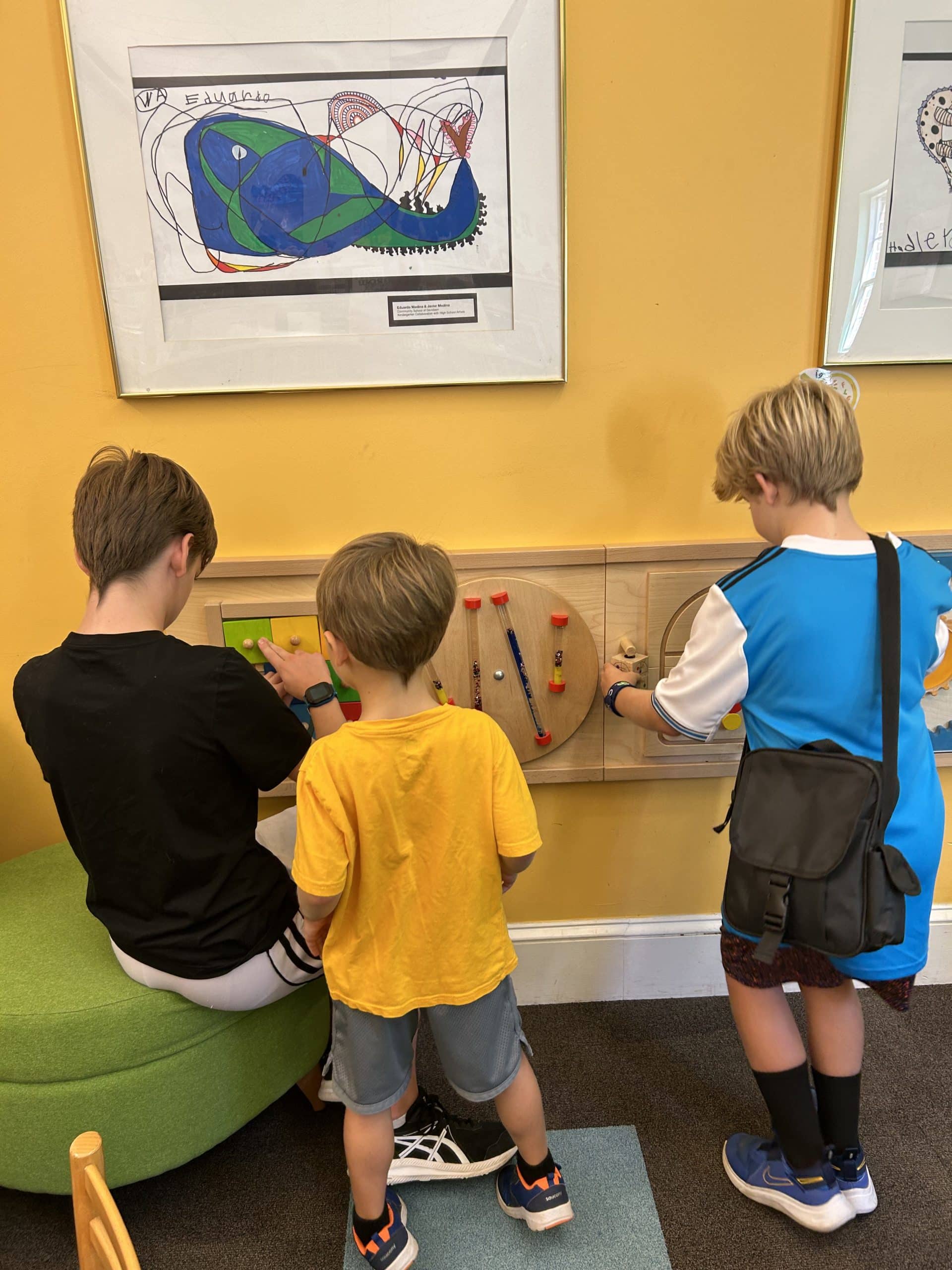Writing with young children is an issue for debate. Some primary teachers say children are too young to communicate on paper or to journal. As schools wait to emphasize writing skills in fourth grade or later, students already fear the written essay. Writing is communicating. And, the earlier the the skill is developed, the better they read and write.
Writing has several functions:
• it communicates one’s perception of reality,
• it assists in the ability to learn new information,
• allows one to express viewpoints and assess values, and
• is an important part of our daily lives.
It is a difficult skill to learn and master without continuous encouragement and practice.
Beginning in the early years there are many ways to express ideas and thoughts on paper. It starts with pictures and symbols – not perfectly formed letters, words, or sentences. More than likely the first time a child writes formally is to print his or her name. Many children learn to do this when they are in pre-school at the age of 3. At a very young age, art and early writing skills are one and the same. From the age of 3 to 5 children have many experiences with letters and print.
Encourage Writing

To encourage early writing skills, combine it with other subjects. Remember, it is not about the product. Thus, it’s about the process. Communication is important. So, ask young children to tell you about their written communication. Or, ask them to read it out loud. If a child scribbles something and then tells you what he wrote, take it seriously. To continue their writing process, let children create a shopping list or a note to a friend. This is how children learn that words are powerful and have meaning. By developing writing skills at an early age you are contributing to a successful academic future.
Language and literacy skills in preschool and kindergarten form the foundation that affects future classroom achievement. Building an understanding of how the written word works is important. Studies show that reading and writing are skills that children develop simultaneously. Early reading is supported and improved by early composition. In addition, young children need reading to help them learn to put thoughts on paper. It is crucial to read and write every day.
All students should understand that written words are everywhere. Teachers encourage ways for parents to practice writing at home. Writing with elementary and middle school students everyday should be woven into all subjects.
Writing At Home
The home environment has an impact on a child’s attitude toward written language. Because, as children see parents scrapbooking, sending holiday cards, thank you cards, or get-well cards, children develop a positive attitude toward writing. Early writing builds a child’s emotional growth and develops critical thinking skills. Lastly, students gain confidence in ideas that are express themselves with written words.
![]()
Blog: writing



